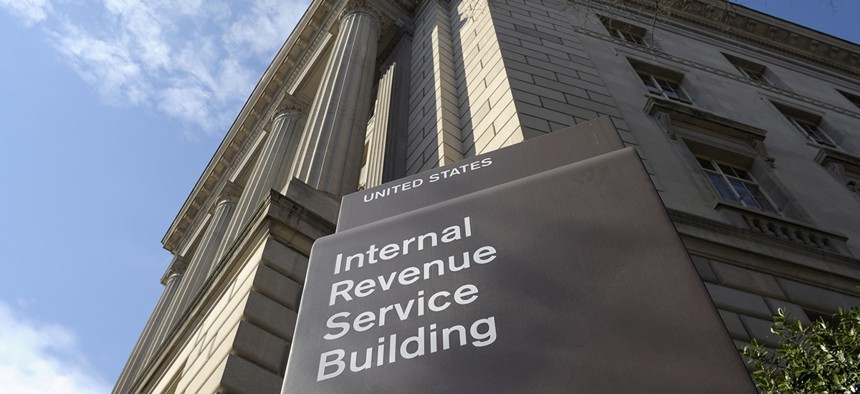IRS Plans to Hire 1,700, Upgrade Outdated Technology

Susan Walsh/AP
In a new strategic plan, the agency projects a 17 percent increase in phone calls as it implements the new tax law.
With a cash infusion and a new strategic plan, the Internal Revenue Service is planning to hire some 1,700 full-time customer service representatives as it implements the new tax law, its acting chief told the National Association of Enrolled Agents, a group of certified tax advisors.
Acting Commissioner David Kautter told the professional group that he also favors adding attorneys to the chief counsel’s office to handle new complexities in the law.
With Congress currently considering an appropriations bill that would raise the long-strapped agency’s budget by $395 million, the IRS on Friday released a new five-year strategic plan. The plan provides a blueprint for updating 140 computer systems and revising 450 tax forms to reflect the Tax Cuts and Jobs Act. It is also heavy on information technology investment to replace outdated hardware—the agency’s most important tax-processing application may be the oldest IT system in government.
“We remain concerned, however, about the agency's ability to hire and train this many new positions in time for the filing season,” the enrolled agents said in a release. “Many employers are finding it difficult to hire good people during the peak of the current business cycle and the federal civil servant hiring rules can cause significant delays and frustrations.”
The agency projects it will need to deliver 40,000 hours of training, augment its outreach events and handle an estimated 4 million additional phone calls (a 17 percent increase), according to an agency spending plan obtained by The Wall Street Journal.
The formal strategic plan for 2018-22, drafted by a team in the chief financial officer’s shop in concert with the Treasury Department, has six strategic goals:
- Empower and enable all taxpayers to meet their tax obligations;
- Protect the integrity of the tax system by encouraging compliance through administering and enforcing the tax code;
- Collaborate with external partners proactively to improve tax administration;
- Cultivate a well-equipped, diverse, flexible and engaged workforce;
- Advance data access, usability and analytics to inform decision-making and improve operational outcomes; and
- Drive increased agility, efficiency, effectiveness and security in IRS operations.
The five-year plan notes that 27 percent of the workforce will be eligible to retire by the end of fiscal 2018. “Moreover, the group that represents our next generation—those aged 25 or younger—makes up less than half of 1 percent of our workforce,” it said. “Succession planning and knowledge transfer are critical to passing on the leadership skills and institutional knowledge necessary for continued effective tax administration.”
Recruitment should focus on “attracting, developing and retaining employees with advanced skillsets,” the plan said. “Developing leaders from our current workforce will make this evolution successful. We must also train and equip employees with the skills and tools necessary to operate in an increasingly digital and data-enabled world.”
The future workforce should also strive for “a culture that values innovation, welcomes multiple perspectives and celebrates diversity.”
The most forward-leaning skill sets are data analytics and cybersecurity, the agency noted, touting a 64 percent reduction in identity theft incidents since the agency began partnering with private sector teams in 2015. But the agency is executing the planning at a time when malicious online attacks on the agency remain a threat.
Future efficiencies will also depend on continuing progress in the ongoing effort to encourage more taxpayers to interact with the IRS online. The cost of an online interaction can be as low as 20 cents, compared with $42 for a phone interaction, $57 for a letter and $68 per call handled by a taxpayer assistance center, the plan says.
Progress for the plan as a will be measured by a “combination of new and existing performance metrics to evaluate progress toward the goal of empowering and enabling all taxpayers to meet their tax obligations,” the plan said. “These include the telephone level of service rate (the percentage of toll-free callers that successfully speak to a customer service representative or receive informational messages); the availability of critical filing season tax forms and instructions; and the Enterprise Self-Assistance Participation Rate,” which involves any IRS communication tool that does not require a live employee.
NEXT STORY: It's time to fix our cloud procurement problems






